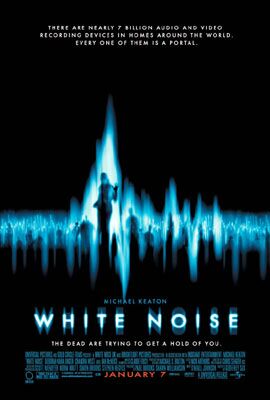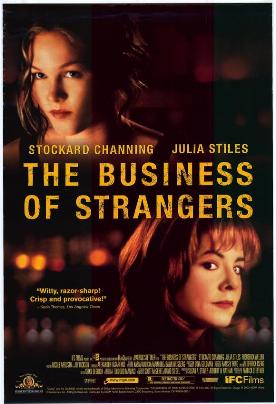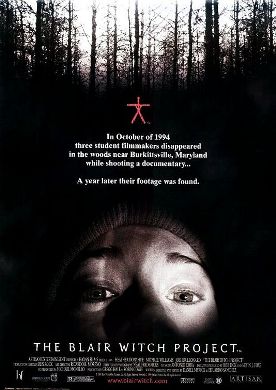White Noise
What I’ve always wanted to know is why, if the dead can communicate with us at all, do they rely on such chancy methods as séances and table-turning or Ouija boards or fleeting appearances in diaphanous form in out-of-the-way places? Or, as in White Noise, Geoffrey Sax’s new movie starring Michael Keaton, barely decipherable images in the “snow” on untuned TVs and barely decipherable voices emerging from the static on unoccupied portions of the FM radio spectrum There is a certain class of people to whom this movie is designed to appeal who suppose that science will eventually allow us to capture and confine God and the mysteries of the supernatural as we have already captured and confined nature, at least to a considerable extent. Yet if ghosts and other heavenly creatures are really going high tech with what this movie calls EVP — Electronic Voice Phenomenon — and insists is real, why don’t they show up in living color and on HDTV? It seems unlikely, somehow, that in the age of cable and satellite TV the eternal’s technical know-how should not yet have progressed beyond the rabbit-ear stage.
But put this objection aside for a moment. The shyness of ghosts is by now well-established in the iconography of the phenomenon, and ghost stories nearly all depend on it. In fact, that’s the great thing about ghost stories as opposed to, say, a whodunnit: you don’t have to explain the mystery. Certainly neither Mr Sax nor his screenwriter, Niall Johnson, thinks it worth their trouble to offer even an implausible explanation in terms of either physics or metaphysics for the phenomena they describe. The trouble is that they try to combine their ghost story with a whodunnit and end up not explaining either one, taking the license provided by the former to remain equally mysterious about the latter.
Mr Keaton plays Jonathan Rivers, a successful architect married to a successful novelist, Anna (Chandra West), but with a small son, Mikey (Nicholas Elia), from an earlier marriage to Jane (Sarah Strange). One fine day, just after she tells Jonathan she is pregnant, Anna disappears. A strange obese Briton called Raymond Price (Ian McNeice) tells him that Anna is dead and that he has been receiving messages from her — among other dead people — on his high-tech audio-visual equipment. At first, Jonathan reacts as most of us would, with anger and annoyance, but after Anna’s body is discovered — she apparently drowned after slipping on some rocks and hitting her head while she was trying to change a flat tire by a river — he re-establishes contact with Price and becomes, like him, a hi-fi buff with an obsession about watching and listening to the dead on TV.
Fair enough, you may say, but the authors are not content to leave it at that. The drawback to talking dead people is that they must have something to say, and Anna, unlike the other ghosts, appears also to be gifted with powers of clairvoyance which make her send her widower hareing about the countryside to rescue people in dire peril. One of them is a woman who has been kidnaped, and the question is raised as to whether or not she herself was kidnaped and murdered instead of having been merely the victim of an accident. Raised but not answered. Though we have been introduced to the kidnapper once before, our acquaintance is so slight that he might as well be a random person, and all that we know about him is that he is yet another techie with banks of receiving equipment and computers and video monitors who thinks that in torturing women he is pleasing a bunch of bad ghosts.
For one of the ghostly mysteries that the film doesn’t bother to explain is why some ghosts only want to say reassuring things to their loved ones while others want to help people in distress — and how, by the way, do they decide which people to help? — while still others say insulting and profane things in scary voices about the people who try to reach them. The latter kind can even, apparently, escape from the TV to kill people or do them serious physical harm. So then, if they can do that, why do they need the assistance of a human agent like the kidnapper in wreaking their mayhem? Do they also have a sexual motive, as it is hinted he does? These are questions that also remain unanswered. In the film’s climactic scene, our hero’s tangle with the ghostly emanations of these evil spirits is as mystifying as his wife’s disappearance in its opening.
Actually, more unbelievable than the ghosts is the fact that Jane, the ex-wife, remains both affectionate and understanding about Jonathan’s manic attempts to reach across to “the other side” to contact her replacement. Meanwhile Mikey, who is unusually well-behaved for a movie child, has little to say about it all but seems quite happy to pass the time while his dad is trying to reach his step-mom in heaven watching “Caspar the Friendly Ghost” on his own TV.
Madame Du Deffand famously said of the legend of the six-mile march of the martyred St Denys with his severed head under his arm, that it’s only the first step that counts. So too you’d think it enough of a wonder that Anna and the other ghosts have got their own TV show, albeit on what must be a very obscure cable network. But this just isn’t enough for Messrs Sax and Johnson. They must make their ghosts also clairvoyants, or sex criminals, and then leave the explanations for such extraordinary qualities to the general mystery of their ghostliness. That strikes me as being typical Hollywood overkill, and it’s hard to see how the profusion of extraordinary events can do otherwise than prove so confusing to audiences that they will refuse to make this Mr Keaton’s first hit movie in nearly a decade.
Discover more from James Bowman
Subscribe to get the latest posts to your email.








